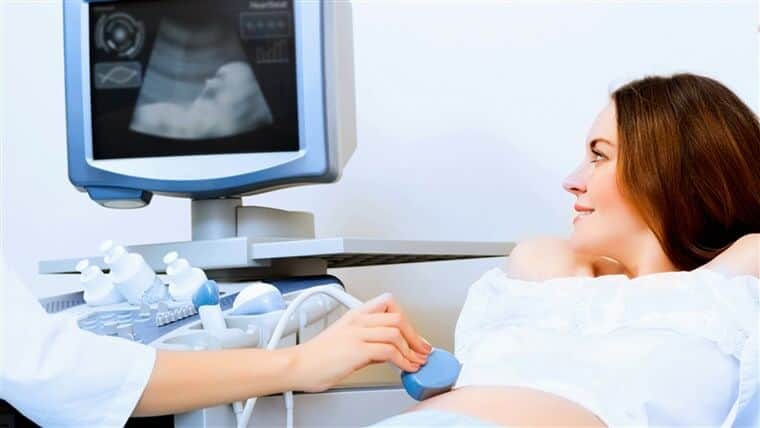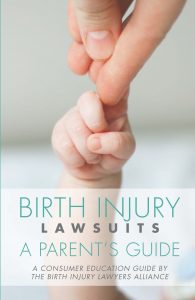
One of the most important tools for assessing how and when a brain injury occurred is through brain imaging. Imaging can be used to determine timing (when the brain injury happened) and causation (how the injury happened).
There are three types of brain imaging:
1) Ultrasound
An ultrasound is quick, readily available and risk free. It is useful in detecting brain bleeding, some long-standing abnormalities, and in some cases recent swelling of the brain. However, an ultrasound is not as sensitive or accurate as CT scans or MRI’s for detecting a brain injury.
2) CT Scan
A CT scan produces images by directing multiple beams of x-rays through the brain. A computer processes the information coming from the x-ray beams and constructs an image. A CT scan is a relatively quick procedure and can identify brain swelling. Lack of oxygen from hypoxia or ischemia can cause an injury to the brain that is identified by swelling. A CT scan is useful for determining the extent of any swelling in the brain and the swelling location within the brain.
When there is oxygen deprivation during labour and delivery it will take approximately 24 hours for swelling to become visible on a CT scan, with the maximum swelling occurring by approximately 72 hours. Thus, a CT scan taken approximately 3 days after an episode of oxygen deprivation is the optimum time to assess brain swelling and it’s location.
Most swelling with oxygen deprivation occurs on both sides (hemispheres) of the brain and within the same general location in both hemispheres. Thus, swelling in both hemispheres, within the same general location of each hemisphere, visible on CT scan at 24 hours after labour and delivery and hitting its peak at 72 hours, is powerful evidence that the brain injury occurred due to oxygen deprivation at or around the time of birth.
3) MRI
Magnetic Resonance Imaging (“MRI”) is the best technique for evaluating brain injury. MRI does not use radiation, but rather relies on the magnetic properties of water to provide images of the brain. As with a CT scan, an MRI can provide useful information about the timing of the injury, the nature of the injury and whether the injury is a result of partial prolonged or acute near total oxygen deprivation.
An MRI has the advantage of being able to detect more subtle injuries but has the disadvantage of the practical difficulties in obtaining an MRI of a newborn.
It is customary in obstetrical malpractice lawsuits for a lawyer to retain a pediatric neuroradiologist to interpret all of a child’s brain imaging and to provide opinions on the most likely cause of any brain injury seen on the imaging and when the brain injury occurred.
Distinct patterns of injury
Oxygen deprivation can occur as a result of partial prolonged deprivation over a period of hours (for example when there is repeated, periodic compression of the umbilical cord) or, alternatively, can occur abruptly due to a near-total disruption of the blood flow through the umbilical cord to the baby (for example in cases of placental abruption).
Partial prolonged injuries and acute near-total, injuries have different, distinct patterns of injury that can be seen on neuroimaging.
When the oxygen deprivation is partial and prolonged the fetus will distribute the limited amount of oxygen-rich blood to essential organs and essential parts of the brain, at the expense of other parts of the brain.
When the disruption to the supply of oxygen is acute near total and sudden the fetus does not have the ability to supply those parts of the brain with the highest oxygen demands with oxygenated blood which results in those brain structures being injured first.
Therefore, the identification of which structures in the brain show evidence of brain injury on the imaging will also provide evidence as to whether the oxygen deprivation was partial and prolonged or acute near total.
The Importance of Neuroimaging
Imaging of the newborn baby is the first and most important step in the causation analysis. In other words, in proving how your baby was injured. These techniques can prove quite clearly that the brain injury did not occur in the prenatal period. Imaging can prove that a brain injury suffered by a newborn occurred at or around the time of birth. This is the “window of opportunity”. Once imaging proves an injury of recent onset it is up to the obstetrical experts and neonatology experts to refine the timing of injury based on other clinical data.
For a detailed explanation of how neuroimaging is used in birth injury lawsuits, check out the article by BILA founding member Richard Halpern: How Do You Know When Your Baby Was Injured: Brain Imaging
Want more information?

The members of the Birth Injury Lawyers Alliance wrote this consumer education guide to help parents understand their rights and their child’s rights when faced with an injury caused by medical negligence. This is the only legal guide in Canada written specifically for parents of children injured during childbirth.
The book is available to download on our website for free. If you would like a print copy, the book is for sale on Amazon (all proceeds go to charity), but we will send you a copy at no charge, if you call us, toll-free at 1-800-300-BILA (2452).
*image courtesy of today.com

Susanne Raab is a lawyer at Pacific Medical Law, and an advocate for people living with disabilities. She has been selected for inclusion by her peers in Best Lawyers in Canada in the area of Medical Negligence and is recognized as a leading practitioner in the Canadian Legal Lexpert® Directory in medical malpractice. Susanne is also a Fellow of the Litigation Counsel of America, an honorary trial lawyer society whose membership is limited to less than one-half of one percent of North American lawyers, judges and scholars.
